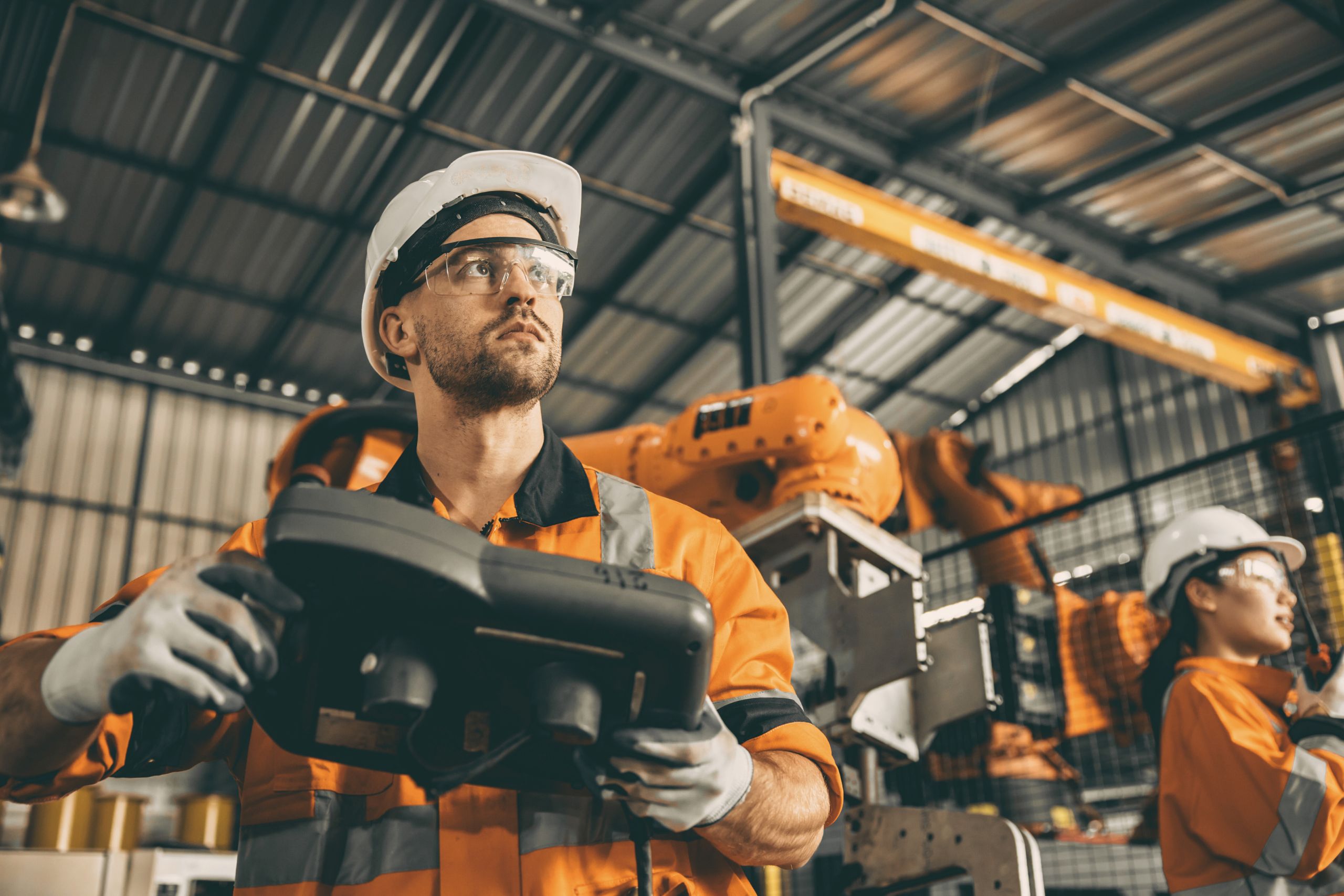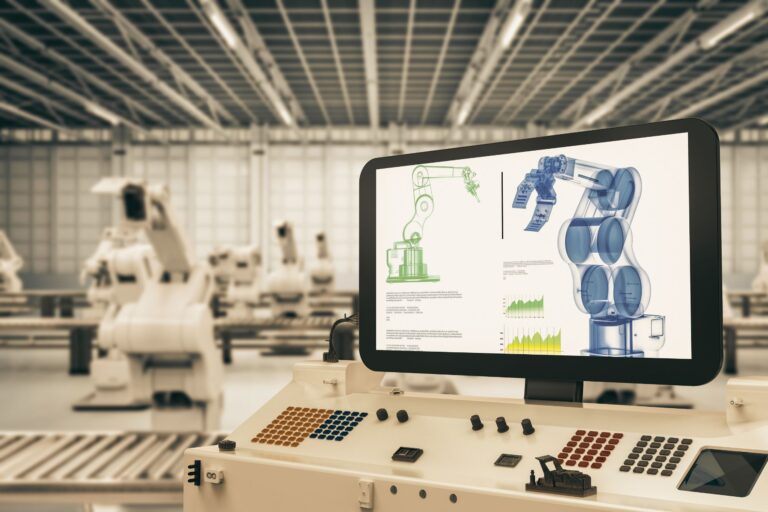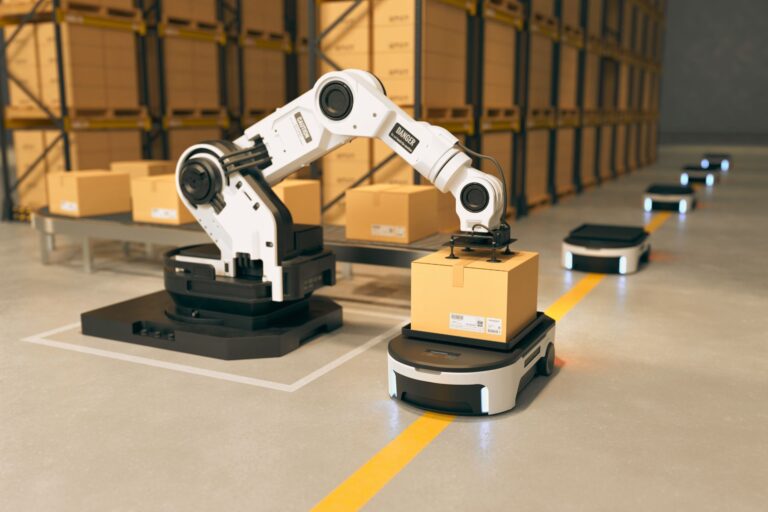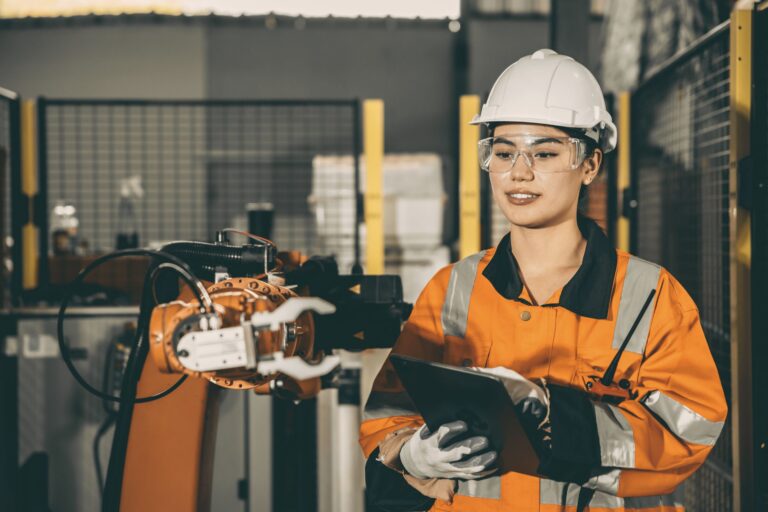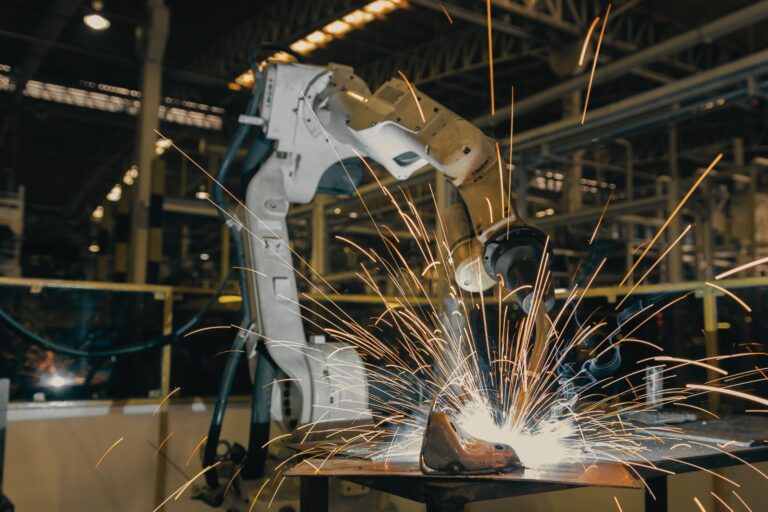Robotics and Safety: How Robots Make Manufacturing Processes Safer
The introduction of robots into industrial environments not only improves efficiency and productivity, but also plays a key role in ensuring workplace safety. Robotics technologies transform dangerous tasks into safe and controlled processes, thereby protecting workers from injury and contributing to a safer work environment.
How do robots improve safety in manufacturing?
- Performing dangerous tasks
Robots can perform tasks that are risky for humans, such as handling heavy materials, toxic chemicals, or working at high temperatures. For example, robotic welding systems eliminate the risk of burns and exposure to harmful gases while ensuring consistency and precision. - Reduction of human errors
Automation reduces the likelihood of human error that can lead to accidents or equipment damage. The robots work according to preset parameters that guarantee safety and consistency in the production process. - Real-time monitoring
Many modern robotic systems have sensors that monitor their environment in real time. They can detect obstacles, potential hazards and deviations in the process, preventing accidents and incidents.
Examples of applications of robots in safety
- Robots for handling heavy loads
The use of robots for loading and unloading activities protects workers from musculoskeletal injuries and other injuries related to heavy physical exertion. This is especially important in industries such as construction and logistics. - Cooperative Robots (Cobots)
Cobots are designed to work collaboratively with humans in the same environment. They have safety features that automatically stop movement when human presence is detected, minimizing the risk of accidents. - Inspection and maintenance robots
Instead of sending humans into dangerous areas, such as tunnels, tall structures or tanks, companies are using robots for inspection and maintenance. This not only reduces the risk of injury, but also increases the accuracy of the activities performed.
What makes robotics safe for workers?
- Integrated safety systems
Modern robots are equipped with numerous sensors and recognition algorithms that allow identifying risky situations and taking adequate actions. - Programmed limits
Robots can be programmed to adhere to certain limits, such as speed and force of movement, which provides greater safety for people nearby. - Learning and working with robots
Companies that implement robots often invest in training their employees. This training provides not only efficient use of the robots, but also an understanding of their safe operation.
How does Bullitt Engineering contribute to safety in the industry?
Bullitt Engineering JSC develops and implements robotic systems that not only optimize production processes, but also create a safer working environment. From the design of welding robots to the integration of cooperative robots, the company offers solutions that meet high safety standards.
Our projects include:
- Automation systems, which eliminate risky tasks.
- Cobots with advanced safety features for work in industrial environments.
- Innovative robotic welding cells, which protect operators from direct contact with the welding process.
Conclusion
Robotics is not only a tool for increasing efficiency, but also a key element in creating safer and more secure workplaces. By implementing innovative technologies and intelligent systems, companies can not only reduce the risk for their employees, but also build competitiveness on a global scale.
Bullitt Engineering JSC continues to work towards the advancement of industrial robotics, providing innovative solutions that transform safety and productivity in the industrial sector.

